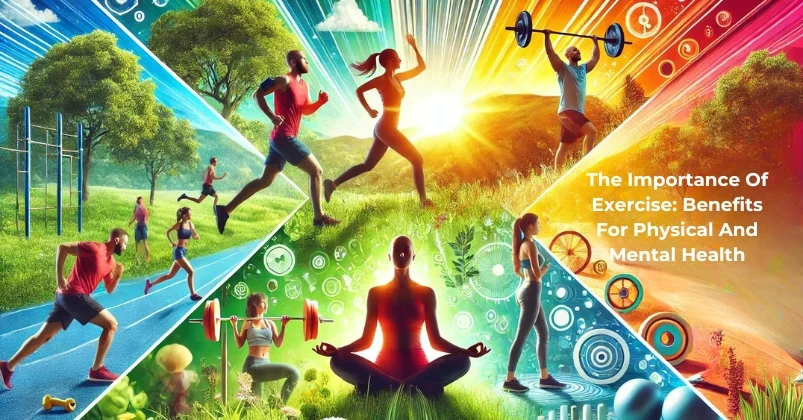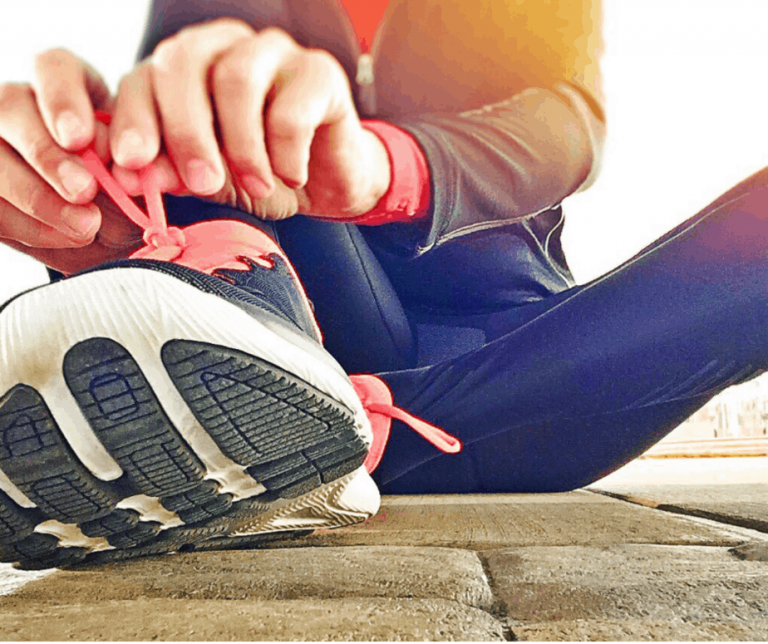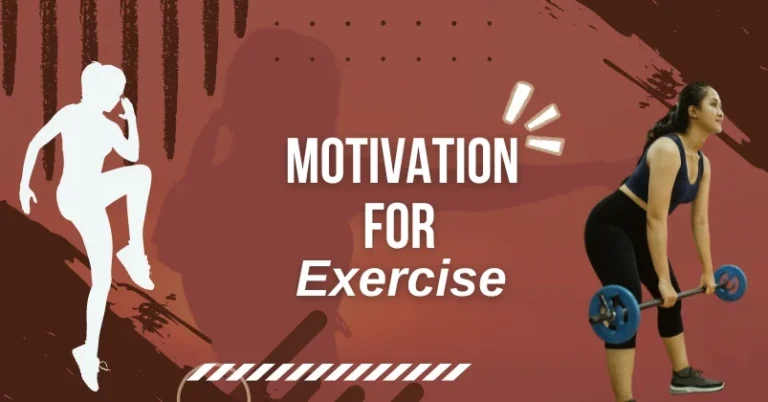The Importance of Exercise: Benefits for Physical and Mental Health
Exercise is an essential part of a healthy lifestyle. It is a physical activity that is designed to improve or maintain physical fitness and overall health. Exercise has numerous benefits that range from physical to mental health, and it is an excellent way to prevent various diseases and improve the quality of life.
Regular exercise can help prevent excess weight gain or help maintain weight loss. When you engage in physical activity, you burn calories. The more intense the activity, the more calories you burn. Exercise can also strengthen your muscles, improve your cardiovascular health, and reduce the risk of chronic illnesses such as heart disease, diabetes, and cancer. Additionally, exercise can help improve your mood, reduce stress, and promote better sleep.
In summary, exercise is an essential part of a healthy lifestyle that can improve both physical and mental health. It can help prevent chronic diseases and improve the quality of life. Understanding the importance of exercise and incorporating it into your daily routine can have a significant impact on your overall health and well-being.
Key Takeaways
- Regular exercise can prevent excess weight gain and improve physical fitness.
- Exercise can reduce the risk of chronic illnesses such as heart disease, diabetes, and cancer.
- Exercise can improve mood, reduce stress, and promote better sleep.
Understanding Exercise
Exercise is any physical activity that requires effort and is done to improve or maintain physical fitness, health, and overall well-being. It is an essential part of a healthy lifestyle and has numerous benefits for both the body and mind.
Physical activity can be divided into two main types: aerobic and resistance training. Aerobic exercise, also known as cardio, is any activity that raises the heart rate and increases breathing. Examples include running, cycling, swimming, and dancing. Moderate-intensity aerobic exercise, such as brisk walking, can provide significant health benefits.
Resistance training, also known as strength training, involves using resistance to build muscle strength and endurance. Examples include weight lifting, push-ups, and pull-ups. Resistance training can help to increase muscle mass, improve bone density, and reduce the risk of injury.
Both aerobic and resistance training are important for overall health and fitness. A combination of the two can provide the best results.
Aerobic activity is particularly beneficial for cardiovascular health. It can help to lower blood pressure, reduce the risk of heart disease and stroke, and improve overall cardiovascular fitness. It can also help to improve mood, reduce anxiety and depression, and improve cognitive function.
Resistance training, on the other hand, can help to increase muscle mass, improve bone density, and reduce the risk of injury. It can also help to improve overall physical function and reduce the risk of falls in older adults.
In summary, exercise is an essential part of a healthy lifestyle. Whether it's aerobic or resistance training, exercise has numerous benefits for both the body and mind. It is important to find a form of exercise that you enjoy and can stick to in the long term.
Exercise And Physical Health
Regular exercise has numerous benefits for physical health. Here are some of the key areas where exercise can have a positive impact:
Weight Management
Exercise can help with weight management by burning calories and increasing metabolism. It can also help to build muscle mass, which can help to increase metabolism even further. In addition, exercise can help to reduce the risk of obesity-related diseases such as diabetes and heart disease.
Heart And Lung Health
Exercise is great for the heart and lungs. It can help to reduce blood pressure and improve circulation, which can reduce the risk of heart disease. Exercise can also help to increase lung capacity, making it easier to breathe during physical activity.
Bone And Muscle Health
Exercise can help to increase bone density, which can reduce the risk of osteoporosis. It can also help to build and maintain muscle mass and strength, which can reduce the risk of falls and fractures.
Balance And Endurance
Exercise can help to improve balance and endurance, which can reduce the risk of falls and improve overall quality of life. It can also help to reduce fatigue and increase energy levels.
Overall, exercise is an important component of physical health. It can help with weight management, heart and lung health, bone and muscle health, and balance and endurance. Incorporating regular exercise into your routine can help you to feel stronger, more energized, and pain-free.
Exercise And Mental Health
Regular exercise has numerous benefits for mental health. It can help manage stress and mood, improve sleep quality, boost self-esteem, and enhance overall well-being.
Stress And Mood Management
Exercise is a great way to manage stress and improve mood. Physical activity releases endorphins, which are natural mood boosters that help reduce stress and anxiety. It also increases the production of neurotransmitters like serotonin and norepinephrine, which can improve mood and reduce symptoms of depression.
Research has shown that even modest amounts of exercise can make a real difference in managing stress and mood. For example, a 30-minute walk or jog can help reduce anxiety and improve mood.
Sleep Quality
Exercise can also improve sleep quality, which is essential for good mental health. Physical activity helps regulate the body's sleep-wake cycle, making it easier to fall asleep and stay asleep. It also reduces the time it takes to fall asleep and increases the amount of deep sleep, which is crucial for physical and mental restoration.
Self-Esteem And Well-Being
In addition to managing stress and improving sleep, exercise can boost self-esteem and enhance overall well-being. Regular physical activity can improve body image and increase feelings of self-worth. It can also provide a sense of accomplishment and help individuals feel more in control of their lives.
Furthermore, exercise can improve cognitive function and brain health, which are essential for good mental health. Physical activity increases blood flow to the brain, which can improve memory, attention, and decision-making skills.
In conclusion, exercise is a crucial component of good mental health. It can help manage stress and mood, improve sleep quality, boost self-esteem, and enhance overall well-being. Incorporating physical activity into daily routine can have significant and positive effects on mental health.
Exercise And Disease Prevention
Regular exercise is known to have numerous health benefits, including reducing the risk of chronic diseases. Here we will discuss how exercise can help prevent cardiovascular diseases, diabetes, cancer, osteoporosis, and arthritis.
Cardiovascular Diseases
Cardiovascular diseases, including heart disease and stroke, are the leading cause of death worldwide. Exercise can help prevent these diseases by improving cardiovascular health, reducing blood pressure, and lowering cholesterol and triglyceride levels. Regular exercise can also help improve insulin sensitivity, which can lower the risk of developing type 2 diabetes.
Diabetes
Type 2 diabetes is a chronic disease that affects millions of people worldwide. Regular exercise can help prevent and manage diabetes by improving insulin sensitivity, which helps the body use insulin more effectively. Exercise can also help control blood sugar levels and reduce the risk of complications associated with diabetes.
Cancer
Regular exercise has been shown to reduce the risk of developing certain types of cancer, including colon, breast, and endometrial cancer. Exercise can also help improve overall health and reduce the risk of chronic diseases, which can indirectly reduce the risk of developing cancer.
Osteoporosis
Osteoporosis is a condition characterized by weakened bones, which can increase the risk of fractures and other injuries. Exercise can help prevent osteoporosis by improving bone density and strength. Weight-bearing exercises, such as walking, running, and weightlifting, are particularly effective at improving bone health.
Arthritis
Arthritis is a condition characterized by joint pain and inflammation. Exercise can help prevent and manage arthritis by improving joint flexibility, reducing pain and inflammation, and improving overall physical function. Low-impact exercises, such as swimming and cycling, are particularly effective at improving joint health without putting excessive stress on the joints.
In summary, regular exercise can help prevent and manage a variety of chronic diseases, including cardiovascular diseases, diabetes, cancer, osteoporosis, and arthritis. By improving overall health and reducing the risk of chronic diseases, exercise can help improve quality of life and increase longevity.
Exercise And Aging
As we age, our bodies undergo changes that can lead to a decrease in strength and balance, which can increase the risk of falls and other injuries. However, regular exercise can help older adults maintain their physical abilities and improve their overall health.
Maintaining Strength And Balance
Strength training exercises, such as lifting weights or using resistance bands, can help older adults maintain and increase muscle mass and strength. This can help prevent falls and improve overall mobility. Balance exercises, such as standing on one leg or walking heel-to-toe, can also help improve stability and reduce the risk of falls.
Preventing Falls
Falls are a common concern for older adults, but regular exercise can help reduce the risk of falling. In addition to strength and balance exercises, activities such as yoga and tai chi can help improve flexibility and coordination, which can also help prevent falls.
Longevity
Exercise has been shown to increase longevity and improve overall health in older adults. Regular physical activity can help reduce the risk of chronic diseases such as heart disease, diabetes, and certain types of cancer. It can also help improve cognitive function and reduce the risk of depression and anxiety.
Overall, exercise is an important part of healthy aging. Older adults should aim to incorporate a variety of activities into their routine, including strength, balance, and flexibility exercises, as well as aerobic activities such as walking or swimming. It is important to consult with a healthcare provider before starting a new exercise program, especially if there are any underlying health concerns.
Different Types Of Exercise
There are many different types of exercise, each with its unique benefits. Here are some of the most popular types of exercise:
Walking
Walking is a great low-impact exercise that can be done almost anywhere. It is an excellent way to improve cardiovascular health, strengthen muscles in the legs and core, and reduce stress.
Running
Running is a high-impact exercise that can help improve cardiovascular health, burn calories, and increase endurance. However, it is important to start slowly and work up to longer distances to avoid injury.
Swimming
Swimming is a low-impact exercise that can help improve cardiovascular health, strengthen muscles, and reduce stress. It is an excellent option for people with joint pain or mobility issues.
Dancing
Dancing is a fun way to improve cardiovascular health, coordination, and balance. It can also help reduce stress and improve mood.
Cycling
Cycling is a low-impact exercise that can help improve cardiovascular health, strengthen leg muscles, and burn calories. It can be done indoors or outdoors, making it a versatile option.
Yoga
Yoga is a low-impact exercise that can help improve flexibility, balance, and strength. It can also help reduce stress and improve mental clarity.
Gardening
Gardening is a great way to get outside and get some exercise. It can help improve flexibility and strength, and reduce stress. It is also a great way to get some fresh air and sunshine.
Soccer
Soccer is a high-intensity exercise that can help improve cardiovascular health, coordination, and teamwork skills. It is also a fun way to get some exercise with friends.
Tennis
Tennis is a high-intensity exercise that can help improve cardiovascular health, coordination, and balance. It can also help improve mental focus and reduce stress.
Jumping Rope
Jumping rope is a high-intensity exercise that can help improve cardiovascular health, and coordination, and burn calories. It is an excellent option for people who want to work out at home or on the go.
In conclusion, there are many different types of exercise, each with its unique benefits. By incorporating a variety of exercises into your routine, you can improve your overall health and well-being.
Practical Tips For Regular Exercise
Regular exercise is essential for maintaining a healthy lifestyle. Here are some practical tips to help you stay motivated and achieve your fitness goals.
Setting Realistic Goals
Setting realistic goals is essential for staying motivated and achieving success. Start by setting small, achievable goals that are specific, measurable, and time-bound. For example, aim to exercise 30 minutes a day, three times a week, or to walk 10,000 steps a day. As you progress, you can gradually increase the intensity, frequency, and duration of your workouts.
Finding Motivation
Finding motivation can be challenging, especially if you are new to exercise or have a busy schedule. Here are some tips to help you stay motivated:
- Find an exercise buddy or join a fitness class to make exercise more enjoyable and social.
- Listen to music or podcasts to make your workouts more entertaining.
- Set up a reward system to celebrate your progress and achievements.
- Keep a workout journal to track your progress and stay accountable.
Working With A Personal Trainer
Working with a personal trainer can be an excellent way to get started with exercise, stay motivated, and achieve your fitness goals. A personal trainer can help you:
- Develop a personalized workout plan that suits your goals, fitness level, and preferences.
- Provide guidance and feedback on proper form, technique, and safety.
- Keep you accountable and motivated by tracking your progress and adjusting your workouts as needed.
- Provide support and encouragement to help you overcome obstacles and challenges.
In conclusion, regular exercise is vital for maintaining a healthy lifestyle. By setting realistic goals, finding motivation, and working with a personal trainer, you can stay on track and achieve your fitness goals.
Conclusion
In conclusion, exercise is crucial for maintaining good health and overall wellness. Engaging in regular physical activity can lead to numerous health benefits, including reduced risk for diseases, improved physical functioning, and increased longevity. According to the CDC, individuals who engage in seven hours of physical activity per week decrease their chances of dying early by 40 percent.
Moreover, exercise can have a positive impact on our quality of life. It can reduce feelings of depression and stress while improving our mood and overall emotional well-being. Additionally, exercise can increase our energy levels and improve our sleep, empowering us to feel more in control.
Overall, it is important to incorporate exercise into our daily routines. Whether it's through a structured workout program, sports, or simply taking a walk, any form of physical activity is better than none. By making exercise a priority, we can reap the many benefits it has to offer and lead healthier, happier lives.








